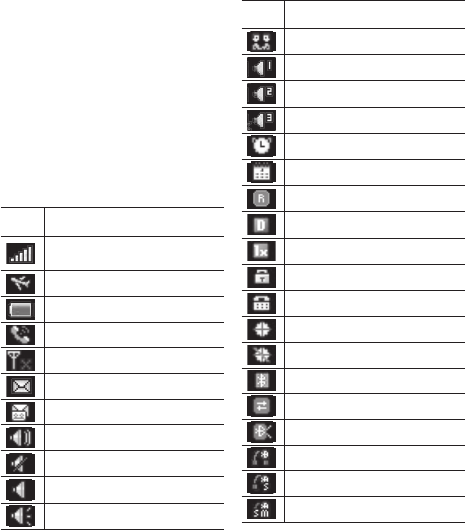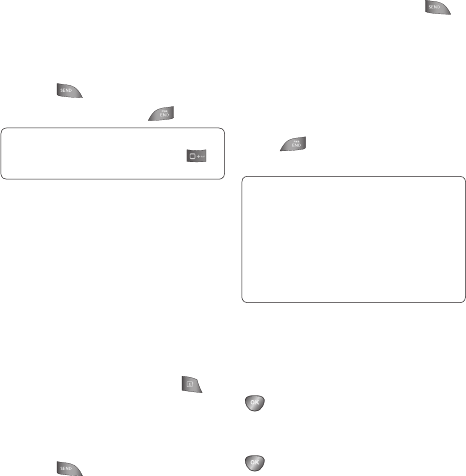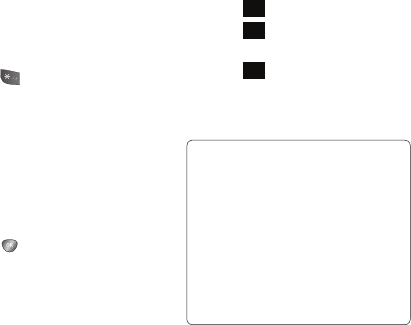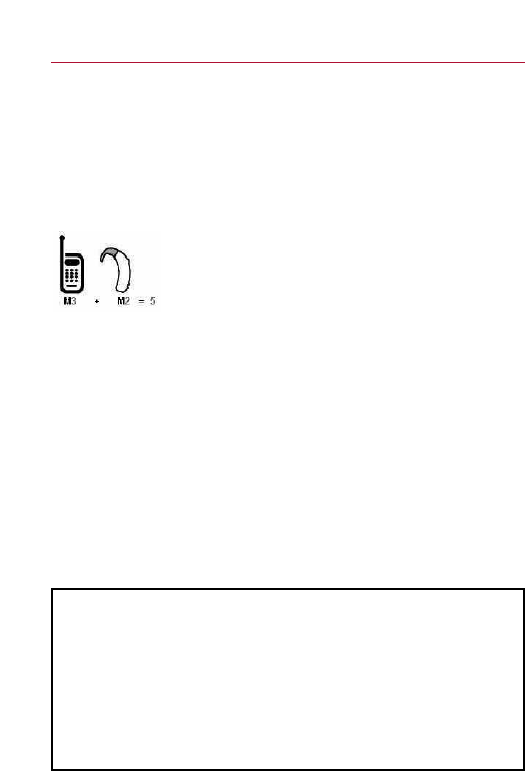LG Electronics USA LG430G Cellular/PCS GSM Phone with Bluetooth User Manual LG 430G Manual1 0 110603 indd
LG Electronics MobileComm USA, Inc. Cellular/PCS GSM Phone with Bluetooth LG 430G Manual1 0 110603 indd
Users Manual
LG 430G User Guide
- English
Congratulations on your purchase of the advanced and compact
LG 430G phone by LG, designed to operate with the latest digital
mobile communication technology.
Some of contents in this manual may differ from your phone
depending on the software of the phone or your service provider.

5
Getting to know your phone
Earpiece
Navigation keys
• Use for quick access
to phone functions.
Camera key
• Go to Camera function
directly.
End/Power key
• Ends or rejects a call.
Turns the phone on/
off.Returns to the
home screen when
you use the menu.
Main screen
Soft keys
• Each of these keys
performs the functions
indicated by the text on
the display immediately
above them.
OK key
• Selects menu options and
confirms actions.
Contacts keys
• Opens the Contacts list.
Call key
• Dials a phone number and
answers incoming calls.

LG 430G | User Guide6
Getting to know your phone
Headset / Charger /
USB Cable connector
Volume keys
Camera Lens
Front screen

7
Installing the SIM card and battery
Installing the SIM Card
When you subscribe to a cellular
network, you are provided with a SIM
card loaded with your subscription
details, such as your PIN, any
optional services available and
many others.
Illustrations
1 Open battery cover.
2 Remove the battery.
3 Insert your SIM.
4 Insert your battery.
Important!
The SIM card can be easily damaged
by scratches or bending, so be careful
when handling, inserting or removing
the card. Keep all SIM cards out of the
reach of small children.

LG 430G | User Guide8
Installing the SIM card and Charging the battery
5 Close the battery cover.
6 Charge your battery.
WARNING: Do not remove the battery
when the phone is switched on, as
this may damage the phone.

9
Your Home screen
Turning Your Phone On and Off
You can power the phone on and off by
pressing and holding the power key.
The Status bar
The Status bar uses various icons, such
as signal strength, new messages,
battery life, and Bluetooth activity.
The table below explains the meaning of
icons you’re likely to see in the Status bar.
Icon Description
Signal Strength
Flight Mode
Battery Strength
In Call State
No Service
New Message
Msg & Voicemail
Speaker Phone
Silent Mode
Normal
Outdoor
Icon Description
Meeting Mode
Customized 1
Customized 2
Customized 3
Alarm
Calendar
Roaming
Digital
1X
SSL
TTY
Location On
E911 Only
Bluetooth On
File Transfer
Visible
Mono Headset
Stereo Headset
Stereo/Mono Headset
LG 430G | User Guide10
Prepaid
1
Add Airtime
2
Buy Airtime
3
My Phone Number
4
My Airtime Info
5
Airtime Display
6
Serial Number
7
SIM Number
8
Code Entry Mode
Contacts
1
Names
2
Settings
1. Contact List Settings
2. Copy
3. Move
4. Send All Contacts via Bluetooth
5. Clear Contacts
6. Memory Info.
3
Groups
4
Speed Dials
5
Own Number
6
My Business Card
Messages
1
Create New Message
2
Inbox
3
Drafts
4
Outbox
5
Sent Items
6
Saved Items
1. Saved Message
2. Text Templates
3. Multimedia Templates
7
Emoticons
8
Message Settings
1. Text Message
2. Multimedia Message
3. Voicemail
Recent Calls
1
Call Log
2
Missed Calls
3
Received Calls
4
Dialed Numbers
5
Call Duration
1. All Calls
2. Dialed Calls
3. Received Calls
4. Last Call
5
Packet Data Counter
Media
1
Camera
2
Pictures
1. Buy Graphics
1. Default Images
3
Video Camera
4
Videos
5
Music
1. Recently Played
2. All Songs
3. Playlists
4. Artists
5. Albums
6. Genres
7. Shuffle Tracks
Menus Overview
11
6
Voice Recorder
7
Sounds
1. Buy Ringtones
2. Ringtone
3. Voice Recordings
4. Default Sounds
8
Other Files
Games & Apps
1
Buy Games
Tools
1
Alarm Clock
2
Calendar
3
To-do List
4
Notes
5
Secret Notes
6
Calculator
7
Converter
8
Stopwatch
9
Go To
10
Settings
Browser
Settings
1
Profiles
2
Display
1. Homescreen
2. Menu Style
3. Dialing
4. Font
5. Backlight
6. Handset Theme
3
Bluetooth
4
Call
1. Call Rejection List
2. Send My Number
3. Answer Mode
4. BT Answer Mode
5. Save New Number
6. TTY
7. Hearing Aid
5
Phone
1. My Navi Key
2. Language
3. Battery Status
4. Handset Information
6
Security
1. Handset Lock
2. Change Codes
7
Memory Info
8
Reset Settings

LG 430G | User Guide12
Calling
Making a call
1 Make sure your phone is on.
2 Use the keypad to enter the
number. To delete a digit press
Clear.
3 Press to begin the call.
4 To end the call, press .
TIP! To enter + when making an
international call, press and hold .
Making a call from your
Contacts
It’s easy to call anyone whose number
you have stored in your Contacts.
1 Press Menu to open the main
menu. Select Contacts, then
select Names.
Or
From the home screen, press .
2 Using the keypad, enter the first
letter of the contact you want to
call and scroll to the contact.
3 Press to begin the call.
Answering and rejecting a call
When your phone rings, press
to answer the call.
While your phone is ringing you can
press Silent to mute the ringing.
This is useful if you have forgotten
to change your profile to silent for a
meeting.
Press or select Reject in order
to reject an incoming call.
TIP! You can change the settings on
your phone to answer your calls in
different ways. Press Menu, select
Settings and choose Call. Select
Answer mode and choose from
Press send key, Open flip or Press
any key.
Using the speakerphone
During a call, you can activate
speakerphone by pressing
key and you can use the
handset in hands-free. If the
speakerphone is active, press
key again to resume normal
handset conversation mode.

13
Speed Dials
You can assign a speed dial number
to a contact you call frequently.
1 Press Menu to open the main
menu. Select Contacts, then
select Speed Dials.
2 Your voicemail is preset to speed
dial 1 and you cannot change this.
Select any other number either
by using the navigation keys or
by pressing the hard key number.
Select Add to add a contact to the
desired speed dial.
3 Your contacts will open. Highlight
the contact you’d like to assign to
that number using the navigation
keys and select Select.
Once you have assigned a speed
dial, you can initiate a call by
pressing and holding the speed
dial number.
Viewing your Call Log
Press Menu and select Recent Calls.
Choose Call Log.
Or
Press to view your call logs.
Call Log - View a complete list of all
your dialed, received and missed calls.
Missed Calls - View a list of any
calls you have missed.
Received Calls - View a list of all the
numbers that have called you.
Dialed Numbers - View a list of all
the numbers you have called.
TIP! From any call log, select Options
and then Delete to delete the
selected items.
Changing the call settings
1
Press Menu and select Recent Calls.
2 From here you can choose from
the following options:
Call Duration - View details of
how long you have spent on your
calls both received and dialed.
Packet Data Counter - View the
amount of all your received and
sent data in kilobytes.

LG 430G | User Guide14
Settings
You can set the menu relevant to a
call. Press Menu, select Settings
and choose Call.
Call Divert - Allows you to set
incoming calls diverted to the Voice
mail center or other phone number.
Select an option from All Voice Calls,
When Busy, No Answer, and Not
Reachable. Then, press Activate and
select To Voice Mail Center or To
Other Number.
Note: Charges are incurred for
diverting calls. Please contact your
service operator for details.
TIP! To turn off all call diverts, press
Options and select Deactivate all.
Fixed Dial Numbers - Allows you to
turn on and compile a list of numbers
which can be called from your phone.
You’ll need your PIN2 code from
your service provider. Only numbers
included in the fixed dial list can be
called from your phone.
Call Waiting - Allows you to
activate Call Waiting.
Call Rejection List - Allows you to
compile a list of calls to reject. Press
Add and select an option.
Send My Number - Choose whether
your number will be displayed when
you call someone (Depends on your
service operator).
Auto Redial - Allows you to set
the auto redial function when a call
attempt has failed.
Answer Mode -
Allows you to set the
answering method. You can choose from
Press Send Key , Open Flip or Press
Any Key.
Minute Minder - Determines
whether to sound a tone at each time
you set when you are in the call.
BT Answer Mode -
Choose how to
answer a call when using a Bluetooth
headset. Select Hands-free or Handset.
Save New Number -
Selecting this
option will save numbers that are not
already in your contacts upon ending
the call.
TTY -
Allows you to activate TTY Mode
to communite via TTY device.
Hearing Aid -
Calling

15
Searching for a contact
1 Press Menu, select Contacts and
choose Names.
Or, from the home screen, press .
2 Using the keypad, enter the first
letter of the name of the contact
you want to call.
3 Use the navigation keys to scroll
through the contacts.
Or
1 Enter the number you wish to
search on the Home screen and
select Options.
2 Choose Search contacts in the
options menu.
Adding a new contact
1 Press Menu, select Contacts and
choose Names.
2 Press Options and select Add
New Contact
.
3 Enter the information you want
in the fields provided and select
Done.
To enter further information
such as additional numbers,
Email address, group, etc., press
Options and choose Add Detail.
Or
1 Enter the number you wish to store
and press Options.
2
Press Save and select New
Contact.
Adding a contact to a group
You can save your contacts into
groups, for example, keeping your
work colleagues and family separate.
There are a number of groups
including Colleagues, Family,
Friends, School and VIP already set
up on the phone.
To create a new group
1 Press Menu and select Contacts
and choose Names.
2 Press Options and select Add
New Group.
3 Enter a name for your new group.
4 Press Done.
Contacts
Note: If you delete a group, the
contacts which were assigned to that
group will not be lost. They will remain
in your contacts.
LG 430G | User Guide16
Contacts
Viewing your own number
Select Own number in the Contacts
menu to view your number.
Creating a business card
You can create your own business
card by selecting My Business Card
from the Contacts menu. Then choose
Add. Enter your name, number,
email address, image, or any other
information in the available fields.
Changing your contact settings
1 Press Menu and select Contacts.
2
Select Settings. From here you can
adjust the following settings:
Contact List Settings - Choose
whether to view contacts saved to
both your Handset & SIM, Handset or
SIM. You can also select to show the
first name or last name of a contact
first, and to show a contact picture.
Copy - Copy your contacts from
your SIM card to your handset or
from your handset to your SIM
card. Choose to do this one by one
or all together.
Move -
This works in the same way
as Copy, but the contact will only be
saved to the location you’ve moved
it to. If you move a contact from the
SIM card to the handset it will be
deleted from the SIM card memory.
Send All Contacts Via Bluetooth
- Send all contacts to another
handset by Bluetooth.
Clear Contacts - Delete all your
contacts.
Memory Info. - You can check
how much memory you’ve got left
on your handset or your SIM card.

17
Your LG 430G includes functions
related to SMS (Short Message
Service), MMS (Multimedia Message
Service) as well as the network’s
service messages. To use these
functions, press Menu and select
Messages.
Sending a message
1 Press Menu, select Messages
and choose Create New
Message.
2 A new message editor will open.
The message editor combines
text message and multimedia
messages into one intuitive and
easy to switch between editor. The
default setting of the message
editor is text message.
3 Enter your message using either
the T9 predictive mode or Abc
manual mode or 123 mode. You
can switch text input modes by
pressing the key.
4 Enter the phone number or press
Options and select Send to add
a contact from the list of your
contacts. You can even add multiple
contacts by selecting Add recipient.
Note: Message can be sent to a
group also. Edit the message then
press send and select contact group
and select the group you want.
5 Enter your message.
6 Select Options and choose Insert.
Use the left and right navigation
keys and add an Image, Video
clip, Sound clip, Schedule,
Business card, Note, Text field,
To-do, or a Text template.
7 Press Send to send the message.
Your message is displayed and
responses appear in the same
window, creating a message
thread with that contact.
TIP! You can select your message
type as SMS or MMS when you enter
a text longer than 1 page in the
message field. If you want to change
the type of message to send, press
Menu > Messaging > Options
> Settings > Text message, and
choose Send long text as.
Messages

LG 430G | User Guide18
Note: Image, Video clip, Sound clip,
Schedule, Business card, Text field
or Subject is added to the message
editor, it will be automatically
converted to MMS mode and you will
be charged accordingly.
Entering text
You can enter alphanumeric
characters using the phone’s keypad.
The following text input methods are
available in the phone: T9 mode, Abc
mode and 123 mode. To change
modes, press the # key. Note: Some
fields may allow only one text input
mode (e.g. telephone number in
address book fields).
T9 mode
T9 mode uses a built-in dictionary
to recognise words you’re writing
based on the key sequences you
press. Simply press the number
key associated with the letter you
want to enter, and the dictionary
will recognise the word once all the
letters are entered.
Using the T9 Mode
Press the keys that correspond with
the digits you want to enter.
1 When you are in the T9 predictive
text input mode, start entering a
word by pressing keys to .
Press one key per letter.
- If the word is still incorrect after
typing completely, press the
key once or more to cycle
through the other word options.
- If the desired word is missing
from the word choices list, add it
by using the Abc mode.
2 Enter the whole word before
editing or deleting any keystrokes.
- To delete letters, press
Clear
.
- Complete each word with a
space by pressing the key.
Abc mode
This mode allows you to enter letters
by pressing the key labeled with the
required letter once, twice, three or
four times until the letter is displayed.
Messages

19
123 mode
Type numbers using one keystroke
per number. You can also add
numbers while remaining in letter
modes by pressing and holding the
desired key.
Inserting symbols
If you want to insert symbols, press
the key, then you can choose a
symbol. Or you can press
Options
and
then choose Insert symbol.
Changing the language
LG 430G supports various languages.
There are two ways to change the
writing language from the writing
screen. You can press Options, go
to Writing options, and then set
the language you want. Or, you
can simply press and hold the
key. The writing options may differ
depending on the language you
choose.
Message folders
Press Menu and select Messages.
Create New Message - Create your
new message.
Inbox -
All the messages you receive
are placed into your Inbox. From the
Inbox, you can reply, forward and more.
Drafts -
If you don’t have time to
finish writing a message, you can save
what you have written so far in the
Drafts folder.
Outbox - This is a temporary storage
folder while messages are being sent
or stores the messages that have
failed to send.
Sent Items - Copies of all the
messages you send are kept in your
Sent folder.
Saved Items - You can access your
Saved messages, Text templates and
Multimedia templates.
Emoticons - You can add, edit and
delete emoticons. You can insert the
preferred emoticon when writing a
message.
Settings - Your message settings
are pre-defined so that you can send

LG 430G | User Guide20
Messages
messages immediately. If you would
like to change the settings, you can
do this using the settings options.
Managing your messages
1 Press Menu, select Messages
and choose Inbox.
2 Select Options and then choose
from the following options:
Reply - Send a reply to the
selected message.
Forward - Send the selected
message to another person.
Make call - Call the person who
sent you the message.
Save number - Save the number
of the message.
Delete - Delete the selected
message.
Create New Message - Write a
new message regardless who sent
you message.
Mark/Unmark - Mark a message
or all messages in order to
perform an action to the selected
messages.
Copy&Move - Choose to copy or
move the selected message to the
SIM card, handset, or My Folder.
Filter - Displays messages by
desired message types.
Message info. - You can check
the message type, subject, and
other information.
If you see the message No space
for SIM message, you should delete
some messages from your Inbox to
create space.
If you see the message No space
for messages, you can delete either
messages or saved files to create
more space.
TIP! While viewing a message, press
Options and select Extract. You
can then extract information, such
as a number, email address or web
address, from the selected message.
TIP! When you receive a message, you
can reply quickly by using the Quick
reply function. While you see the
message, press Options and select
Quick reply. This is useful if you need
to reply the message during a meeting.
21
Changing your text message
settings
Press Menu, select Messages, then
choose Settings and Text Message.
The following options are available:
Text Message Center - View the
details for your message center.
Email Gateway - Allows you to edit
the Email Gateway number.
Character Encoding - Choose how
your characters are encoded. This
affects the size of your message and
you might incur extra data costs.
Send Long Text As - Choose
whether to send your message as
Multiple SMS or MMS when you
enter text longer than 160 characters
in the message field.
Changing your multimedia
message settings
Press Menu, select Messages, then
choose Settings and Multimedia
Message. The following options are
available:
Slide Duration - Choose how long
your slides appear on screen.
Creation mode - Allows you to select
the contents type supported by MMS.
Delivery Time - Configures the
delivery time of the message to the
recipient. The multimedia message
center will deliver the message after
the delivery time.
Changing your other settings
Press Menu, select Messages,
and choose Settings. The following
options are available:
Text Message - You can configure
text message related options.
Multimedia Message -You can
configure multimedia message
related options.
Voicemail - Add a new voicemail
service. Contact your service operator
for more information on the service
they provide.
Service Message - Choose to
receive or block service messages.

LG 430G | User Guide22
Media
Camera
Using the camera module built in
your phone, you can take pictures
of people. Additionally, you can send
photos to other people and select
photos as wallpaper.
Taking a quick photo
1 Press Menu and select Media.
Select Camera to open the
viewfinder.
2 Holding the phone and, point the
lens towards the subject of the
photo.
3 Press key to take a photo.
Video camera
Shooting a quick video
1 Press Menu and select Media,
then choose Video camera.
2 Point the camera lens towards the
subject of the video.
3 Press key to start recording
4 Rec will appear in the viewfinder
and a timer will show the length of
5 Select Stop to stop recording.
Music
Your LG 430G has a built-in music
player so you can play all your
favourite music.
Playing a song
1 Press Menu and select Media,
then choose Music.
2 Choose All songs then select the
song you want to play.
3 Select to pause the song.
4 Select to skip to the previous
song.
5 Select to skip to the previous
song.
6 Select Back to stop the music and
return to the music player menu.
Note: Music is copyright protected
in international treaties and national
copyright laws. It may be necessary
to obtain permission or licence to
reproduce or copy music. In some
countries national law prohibits private
copying of copyrighted material.
Please check the national legislation
of the applicable country concerning
the use of such materials.

23
Voice recorder
Use your Voice recorder to record
voice memos or other sounds.
Recording your voice memo
1 Press Menu and select Media,
then choose Voice recorder.
2 Press key to begin recording
3 Choose Stop to end the recording.
4 Press Options and select Play last
recorded to listen to the
recording.
Gallery
You can store any media files into
your phone’s memory so that you
have easy access to all of your
images, sounds, videos, others and
games. You can also save your files
to a memory card. The advantage
of using a memory card is that you
can free up space on your phone’s
memory. All your multimedia files will
be saved in Gallery. Press Menu then
select Gallery to open a list of folders.
Games & Apps
Your LG 430G comes with preloaded
games to keep you amused when
you have time to spare. If you choose
to download any additional games or
applications they will be saved into
this folder. Press Menu and select
Games & Apps.
Tools
Setting your alarm
(Menu > Tools > Alarm clock)
You can set up to 5 alarm clocks to
go off at a specified time.
Using the calendar
(Menu > Tools > Calendar)
When you enter this menu, a
calendar appears. A square cursor
is located on the current date. You
can move the cursor to another date
using the navigation keys.
Adding an item to your to do list
(Menu > Tools > To-do list)
You can view, edit and add tasks
to do.
Games & Apps/ Tools
LG 430G | User Guide24
Tools
Adding a note
(Menu > Tools > Notes)
You can register your own notes here.
Secret notes
(Menu > Tools > Secret notes)
You can write the private memo to
protect your privacy. You enter the
security code to use this menu.
Adding a city to your world time
(Menu > Tools > World time)
You can add a required city to the
list of world clock. You can also
check the current time of major cities
around the world.
Using your calculator
(Menu > Tools > Calculator)
The calculator provides the basic
arithmetic functions: addition,
subtraction, multiplication, division
and Scientific applications also.
Date finder
(Menu > Tools > Date finder)
Date finder is a handy tool to help you
calculate what the date will be after a
certain amount of days has passed.
Converting a unit
(Menu > Tools > Converter)
This converts many measurements
into a unit you want.
Using the stopwatch
(Menu > Tools > Stopwatch)
This option allows you to use the
function of a stopwatch.
Go to
(Menu > Tools > Go to)
It helps you to go to the menu you
search for. You can set the item as
Go to.
SIM services
(Menu > Tools > SIM services)
This feature depends on SIM and
the network services. In case the
SIM card supports SAT (i.e. SIM
Application Toolkit)
services, this menu will be the
operator specific service name stored
on the SIM card.

25
Internet
Accessing the Internet browser
You can launch the wap browser
and access the homepage of the
activated profile on Internet Profiles.
You can also manually enter an URL
address and access the associated
wap page. Press Menu and select
Internet.
Note: An additional cost is incurred
when connecting to this service and
downloading content. Check your data
charges with your network provider.
Settings
Personalising your profiles
(Menu > Settings > Profiles)
You can personalise each profile
setting. Choose the profile you want
and select Options and choose Edit.
Using flight mode
(Menu > Settings > Profiles >
Flight mode)
Use this function to switch the flight
mode on. You will not be able to
make calls, connect to the Internet,
send messages when flight mode is
switched on.
Changing your display settings
(Menu > Settings > Display)
You can change the settings for the
phone display.
Bluetooth
Changing your Bluetooth settings
1 Press Menu and select Settings
then choose Bluetooth.
2 Select Settings
Make your changes to:
- My device visibility - Choose
Internet/ Settings

LG 430G | User Guide26
Settings
whether to Visible, Hidden or
Visible for 1 min your device
to others.
- My device name - Enter a
name for your LG 430G.
- Supported services - Supported
services
- My address
-
View your Bluetooth
address.
Pairing with another Bluetooth
device
1 Check your Bluetooth is On and
Visible. You can change your
visibility in the Bluetooth Settings
menu, by selecting My device
visibility, then Visible.
2 Select Search new device from the
Bluetooth menu.
3 Your LG 430G will search for
devices. When the search is
completed Add and Refresh will
appear on screen.
4
Choose the device you want to pair
with, then handset create passcode
by default everytime you connect.
5 Your phone will then connect to the
other device.
6 Your passcode protected Bluetooth
connection is now ready.
TIP!
1. When you use a Bluetooth headset,
A2DP and AVRCP profiles are not
supported while you play video.
It means you will not listen video
sound if you use Bluetooth headset.
2.
Bluetooth file transferring function
will be blocked under some
applications running. (Voice call,
Camera/ Camcorder, MusicPlayer,
UMS/ PCSync)
Changing your phone settings
(Menu > Settings > Phone)
Enjoy the freedom of adapting
how your LG 430G works for your
own style.
My navi key -
You can change
the shortcuts of 4 navigation keys.
Language - You can change the
language for the display texts in
your phone. This change will also
affect the language input mode.
27
Battery status - Choose to
switch the power save settings
Auto, Always on or Off. If you
set Always on, you can save the
battery power.
Handset information - View the
technical information for your
LG 430G.
Changing your security settings
(Menu > Settings > Security)
Change your security settings
to keep your LG 430G and the
important information safe.
- PIN code request - Choose a
PIN code to be requested when
you turn your phone on.
- Handset lock - Choose to lock
your handset.
- Lock if SIM is changed - If
you activate this option, your
phone will request a security
code when you change your
SIM card.
- Change codes - Change your
PIN code, PIN2 code or Security
code.
Viewing memory status
(Menu > Settings > Memory info.)
You can use the memory manager
to determine how each memory
is used and see how much space
is available: common, reserved,
SIM and external memory and also
set the primary storage when the
memory card is inserted.
Resetting your phone
(Menu > Settings > Reset
Settings)
Use Restore factory settings
to reset all the settings to their
factory definitions. You need the
security code to activate this
function. The default security
code is set to “0000”.

LG 430G | User Guide28
You can synchronise your phone
with your PC to make sure all
your important details and dates
match, but also to backup your
files to put your mind at ease.
Installing LG PC Suite on your PC
Go to http://www.lg.com and
select your region, country &
language to download LG PC
Suite. When you complete the
download, unpack the file and
install the PC Suite. Follow
the instructions on screen
to complete the LG PC Suite
Installer wizard. Once installation
is complete, the LG PC Suite icon
will appear on your desktop.
Viewing your phone files on your PC
1 Connect the USB cable to your
phone and your PC.
2 Select the PC suite mode from the
popup menu in your phone. And
run PC Suite Program in your PC.
3 After searching the phone it will be
connected automatically.
TIP! Viewing the contents of your
phone on your PC helps you to
arrange files, organise documents and
remove contents you no longer need.
PC Suite
29
LG Mobile Phone Software update
from internet
For more information on using this
function, please visit the http://
update.lgmobile.com or http://www.
lg.com/common/ index.jsp select
country and language.
This feature allows you to update the
firmware of your phone to the newer
version conveniently from the internet
without the need to visit a service
centre.
As the mobile phone firmware update
requires the user’s full attention for
the duration of the update process,
please make sure to check all
instructions and notes that appear at
each step before proceeding. Please
note that removing the USB data
cable or battery during the upgrade
may seriously damage your mobile
phone.
Software Upgrade

Part 15.21 statement
" Change or Modifications that are not expressly approved by the manufacturer could void
the user's authority to operate the equipment. “
Part 15.105 statement
This equipment has been tested and found to comply with the limits for a class B digital device, pursuant to
Part 15 of the FCC Rules. These limits are designed to provide reasonable protection against harmful interference
in a residential installation. This equipment generates uses and can radiate radio frequency energy and, if not installed
and used in accordance with the instructions, may cause harmful interference to radio communications. However, there
is no guarantee that interference will not occur in a particular installation. if this equipment does cause harmful
interference or television reception, which can be determined by turning the equipment off and on, the user is
encouraged to try to correct the interference by one or more of the following measures:
- Reorient or relocate the receiving antenna.
- Increase the separation between the equipment and receiver.
- Connect the equipment into an outlet on a circuit different from that to which the receiver is connected.
- Consult the dealer or an experienced radio/TV technician for help.

Part 15 Class B Compliance
This device and its accessories comply with part15 of FCC rules.
Operation is subject to the following two conditions:
(1) This device & its accessories may not cause harmful interference.
(2) This device & its accessories must accept any interference received,
including interference that may cause undesired operation.
Body-worn Operation
This USB modem has been tested for typical body-worn operations
with the distance of 0.79inches (2.0cm) from the user’s body.
To comply with FCC RF exposure requirements, a minimum separation distance
of 0.79inches(2.0cm) must be maintained from the user's body.
For example, this device must be maintained from the user's body
with an appropriatebelt-clip accessory.[More than 0.79inches(2.0cm)]
Additionally, Belt clips, holsters & other body-worn accessories
may not contain metallic components.

280
FCC Hearing-Aid Compatibility (HAC)
Regulations for Wireless Devices
On July 10, 2003, the U.S. Federal Communications Commission
(FCC) Report and Order in WT Docket 01-309 modified the
exception of wireless phones under the Hearing Aid Compatibility
Act of 1988 (HAC Act) to require digital wireless phones be
compatible with hearing-aids. The intent of the HAC Act is to
ensure reasonable access to telecommunications services for
persons with hearing disabilities.
While some wireless phones are used near some hearing devices
(hearing aids and cochlear implants), users may detect a buzzing,
humming, or whining noise. Some hearing devices are more
immune than others to this interference noise, and phones also
vary in the amount of interference they generate.
The wireless telephone industry has developed a rating system for
wireless phones, to assist hearing device users to find phones that
may be compatible with their hearing devices. Not all phones have
been rated. Phones that are rated have the rating on their box or a
label located on the box.
The ratings are not guarantees. Results will vary depending on the
user's hearing device and hearing loss. If your hearing device
happens to be vulnerable to interference, you may not be able to
use a rated phone successfully. Trying out the phone with your
hearing device is the best way to evaluate it for your personal
needs.
M-Ratings: Phones rated M3 or M4 meet FCC requirements and
are likely to generate less interference to hearing devices than
phones that are not labeled. M4 is the better/higher of the two
ratings.
T-Ratings: Phones rated T3 or T4 meet FCC requirements and are
likely to generate less interference to hearing devices than phones
that are not labeled. T4 is the better/ higher of the two ratings.
Safety

281
Hearing devices may also be rated. Your hearing device
manufacturer or hearing health professional may help you find this
rating. Higher ratings mean that the hearing device is relatively
immune to interference noise. The hearing aid and wireless phone
rating values are then added together. A sum of 5 is considered
acceptable for normal use. A sum of 6 is considered for best use.
In the example to the left, if a hearing aid meets
the M2 level rating and the wireless phone meets
the M3 level rating, the sum of the two values
equal M5. This should provide the hearing aid user
with “normal usage” while using their hearing aid
with the particular wireless phone. “Normal usage” in this context
is defined as a signal quality that’s acceptable for normal
operation.
The M mark is intended to be synonymous with the U mark. The T
mark is intended to be synonymous with the UT mark. The M and T
marks are recommended by the Alliance for Telecommunications
Industries Solutions (ATIS). The U and UT marks are referenced in
Section 20.19 of the FCC Rules. The HAC rating and measurement
procedure are described in the American National Standards
Institute (ANSI) C63.19 standard.
When you're talking on a cell phone, it's recommended that you
turn the BT (Bluetooth) mode off for HAC.
Safety
For information about hearing aids and digital wireless phones
Wireless Phones and Hearing Aid Accessibility
http://www.accesswireless.org/hearingaid/
FCC Hearing Aid Compatibility and Volume Control
http://www.fcc.gov/cgb/consumerfacts/hac_wireless.html

322
※ HAC statement regarding Multiband
This phone has been tested and rated for use with
hearing aids for some of the wireless technologies
that it uses.
However, there may be some newer wireless
technologies used in this phone that have not been
tested yet for use with hearing aids.
It is important to try the different features of this phone
thoroughly and in different locations, using your hearing
aid or cochlear implant, to determine if you hear any
interfering noise.
Consult your service provider or the manufacturer of this
phone for information on hearing aid compatibility.
If you have questions about return or exchange policies,
consult your service provider or phone retailer.